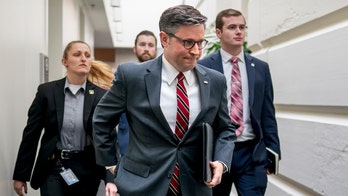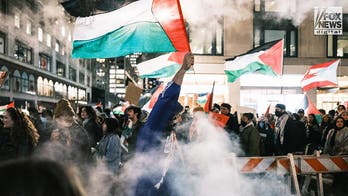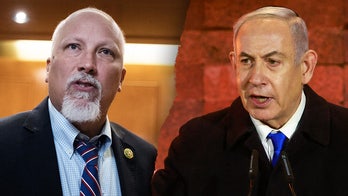Ebola patient Nina Pham discharged from NIH
'Virus free' Dallas nurse thanks health care workers, family, friends
WASHINGTON – A mandatory quarantine for health care workers returning from West Africa could be the next step the federal government takes in trying to prevent Ebola from spreading on American soil.
Anthony Fauci, who leads the National Institute of Allergy and Infectious Diseases, said Friday that a mandatory quarantine for health care workers is under “active discussion.”
“You’ll be hearing more on that,” he said during a press conference where he discussed the case of Nina Pham. Pham, a 26-year-old Texas nurse who contracted Ebola while caring for Thomas Eric Duncan, a Liberian national and the first U.S. Ebola patient, was declared virus-free on Friday.
A day earlier, though, health officials in New York confirmed the fourth case of Ebola in the U.S. The cases have continued to fuel calls from lawmakers and others to reconsider public health procedures. Right now, the government is requiring travelers from three Ebola-stricken countries to arrive at five designated U.S. airports where they will be subject to enhanced screening and be monitored for 21 days.
White House spokesman Josh Earnest, asked about the possibility of mandatory quarantines, said Friday afternoon that protocols would be driven by the medical and scientific community.
“We have our medical experts and our scientists looking carefully at how we treat Ebola patients and how we can do that in a way that protects the American public and in a way that protects health care workers,” Earnest said at the daily White House briefing.
“So we’re going to continue to rely on that advice as we regularly update and review procedures as necessary to protect the American public,” he added.
The latest case is that of Dr. Craig Spencer, a doctor who had recently worked with Ebola patients in Guinea. He also had ridden the New York subways, gone bowling and eaten at restaurants upon his return to the States. While health officials were quick to point out that Spencer had followed U.S. and international protocols, which included checking his temperature and watching for other symptoms, some wondered why he wasn’t quarantined during Ebola’s 21-day incubation period.
According to the Centers for Disease Control and Prevention, isolation, the practice of separating ill people who have a communicable disease from those who are healthy, and quarantines, which are used to separate and restrict the movement of people who are well but may have a disease and don’t know it, are handled by the CDC.
Both options are used to protect the public by limiting exposure to communicable diseases. Breaking a federally ordered quarantine can be punishable by fines or prison time.
Federal isolation and quarantines are authorized by executive order of the president. Presently, the list of diseases and viruses that can trigger them include: cholera, diphtheria, infectious tuberculosis and severe acute respiratory syndromes, as well as a category that includes Ebola.
The federal government gets its authority from the commerce clause in the U.S. Constitution, which allows the U.S. Secretary of Health and Human Services to take “measures to prevent the entry and spread of communicable diseases from foreign countries into the United States and between states,” according to the CDC’s website.
States also have the power to isolate and quarantine residents, though those laws vary. To date, most of the monitoring and quarantine efforts in Texas have been handled by local officials.
The last time a large-scale federal isolation or quarantine was enforced was during the Spanish Flu of 1918.





